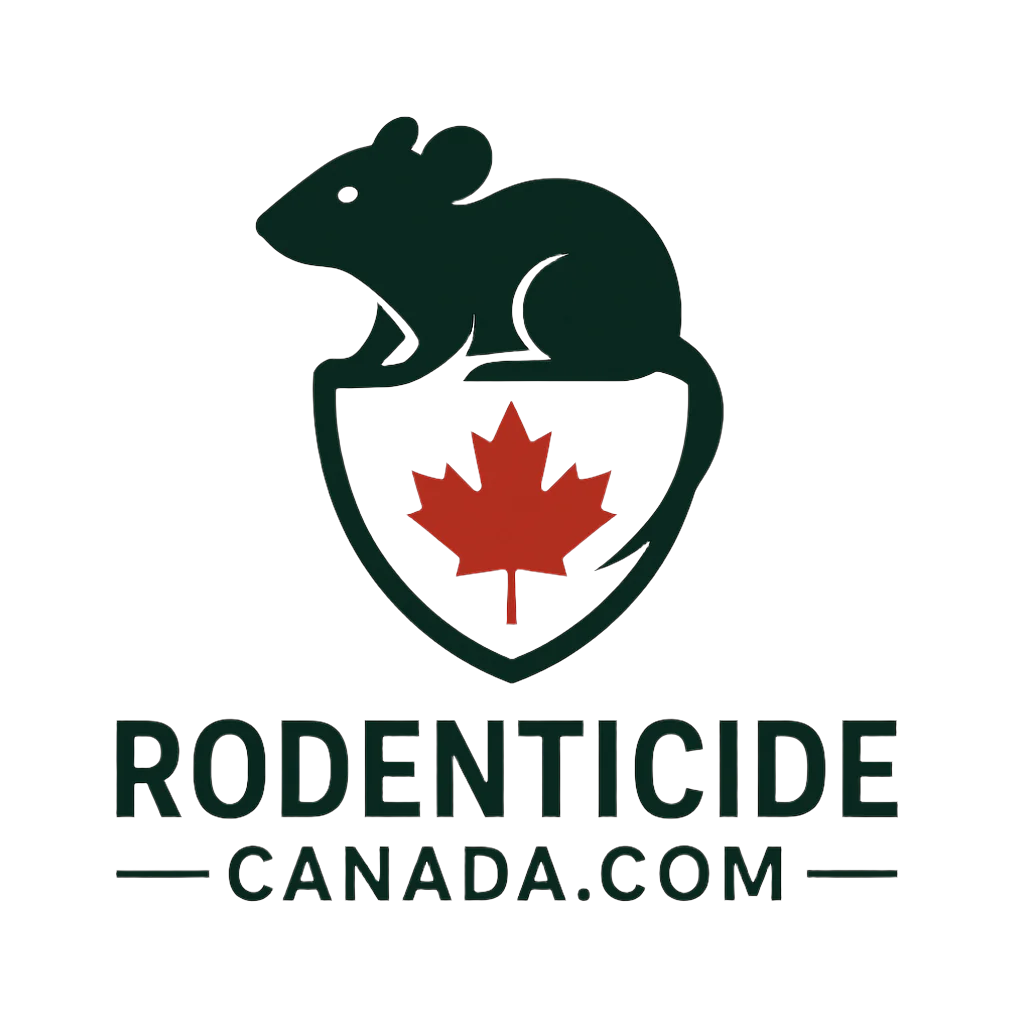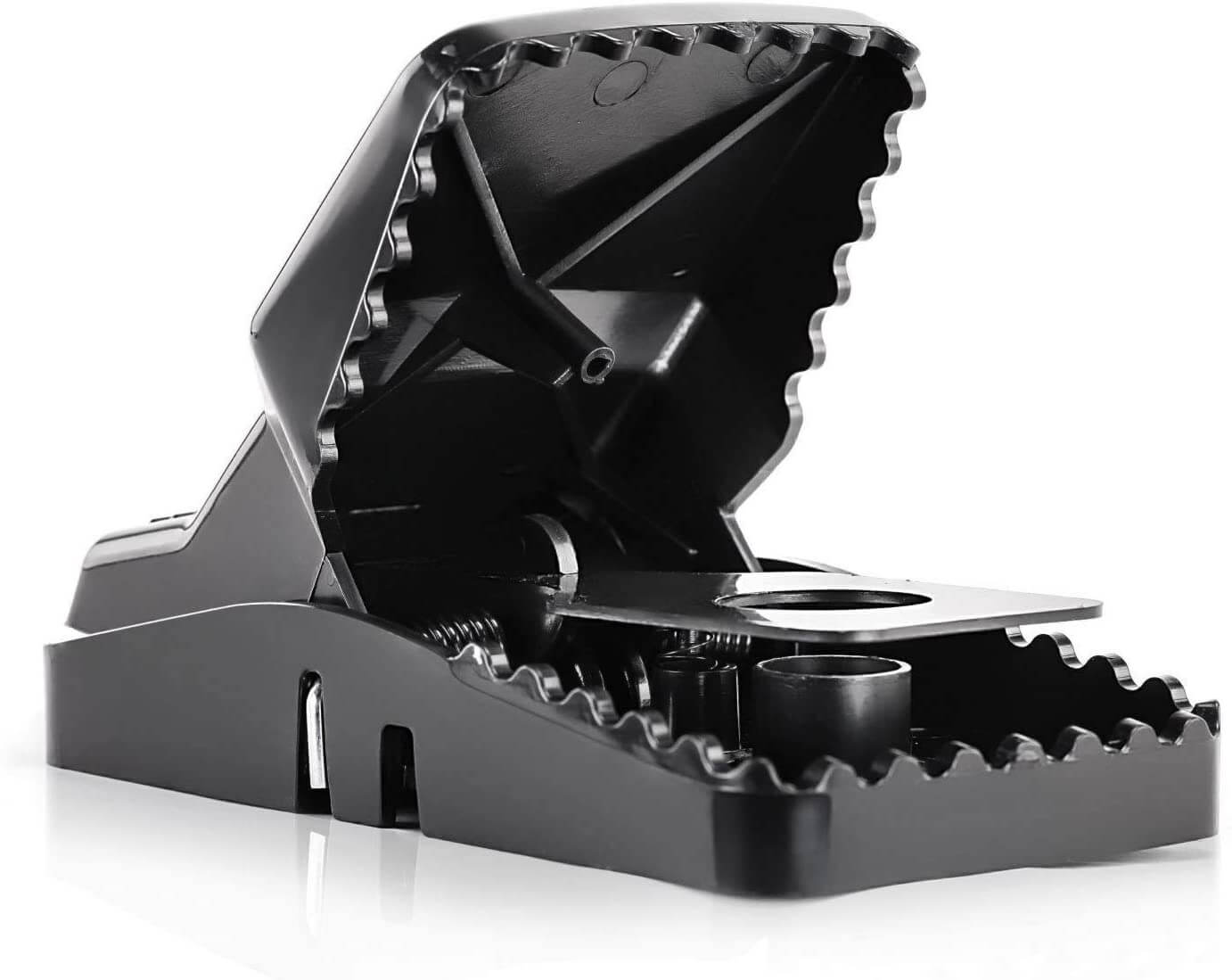Key Takeaways
-
Match the active ingredient to your situation: rapid knockdown vs. lower secondary-poisoning risk, indoor vs. outdoor, residential vs. commercial.
-
The formulation matters: blocks for durability, pellets for quick uptake, soft bait for high palatability in cold rooms, and liquid baits for arid zones.
-
Always use tamper-resistant bait stations and follow the Health Canada label. Provincial and municipal rules can vary; availability may differ by province.
-
Rodenticides work best inside an Integrated Pest Management (IPM) plan: sanitation, proofing, monitoring, and targeted baiting.
1) Start with Identification & Pressure
Before choosing a product, confirm:
-
Rodent species: House mouse, Norway rat, or roof rat (ship rat). Track size of droppings, smear marks, gnaw patterns, and runways.
-
Infestation level: Light (fresh signs, limited sightings) vs. heavy (multiple daily sightings, structural damage).
-
Environment: Home & cottage, farm buildings, food processing, restaurants, warehouses, retail, or multi-unit residential.
-
Non-target exposure risks: Pets, livestock, wildlife, children, and sensitive environments.
Pro tip: Document where you see activity (with dates). This helps you choose the right product and measure results.
2) Compare Active Ingredients (What They Do Best)
| Active Ingredient | Type | Typical Use Strengths | Secondary Poisoning Risk* | Notes |
|---|---|---|---|---|
| Bromadiolone | Second-gen anticoagulant (SGAR) | Reliable for both mice & rats; good for moderate to heavy infestations | Moderate–High | Popular “all-rounder”; effective in cool facilities; label dictates indoor/outdoor use. |
| Brodifacoum | SGAR | Fast, potent knockdown in severe rat pressure | High | Use carefully with strict stationing and record-keeping; observe all label precautions. |
| Diphacinone / Chlorophacinone | First-gen anticoagulant (FGAR) | Maintenance programs; lower potency, repeat feeding often needed | Lower–Moderate | Useful where SGAR stewardship requires milder options. |
| Cholecalciferol (Vitamin D3) | Non-anticoagulant | Effective for resistance management; different mode of action | Lower vs SGARs | Useful rotation option; follow label for bait placement and carcass retrieval. |
*Relative, generalized comparison. Always rely on the product’s Canadian label for definitive guidance.
3) Choose the Right Formulation
-
Block Bait (wax or extruded):
-
Best for: Professional/commercial use, damp or variable temps, long service intervals.
-
Why: Weather-resistant and can be secured on station rods to prevent translocation.
-
-
Soft Bait (pouches):
-
Best for: Cold rooms, winter baiting, finicky feeders; very high palatability.
-
Why: Oils remain attractive at low temperatures; great for food processing and warehouses.
-
-
Pellets/Meal:
-
Best for: Quick acceptance where rodents are grain-conditioned.
-
Why: Mimics natural diets; monitor for spillage and use stations to prevent access.
-
-
Liquid Bait:
-
Best for: Dry areas where water is scarce.
-
Why: Thirsty rodents will drink readily; station to prevent spills.
-
4) Match Product to Location
Residential & Cottages
-
Goal: Safety first; discreet control.
-
Pick: Palatable soft bait or blocks in certified tamper-resistant stations (indoor use as per label).
-
Tips:
-
Seal entry points (¼-inch gaps = “mouse doors”).
-
Store food in sealed bins; empty garbage nightly.
-
Place stations along walls, behind appliances, and near suspected runways.
-
Farms & Barns
-
Goal: Continuous pressure management.
-
Pick: Durable block bait for outbuildings; consider non-anticoagulant (cholecalciferol) rotation.
-
Tips:
-
Elevate and rotate feed; clean spills promptly.
-
Station baits near doors, feed rooms, and exterior perimeters—never where non-targets can access.
-
Keep a simple bait map and service log.
-
Food Processing & Restaurants
-
Goal: Compliance + zero tolerance for activity.
-
Pick: Soft bait in colder zones; blocks for durability; monitoring blocks or non-toxic pre-bait where required.
-
Tips:
-
Integrate with auditable IPM: trend logs, device IDs, service intervals, corrective actions.
-
Tighten proofing (brush seals, door sweeps, dock plates).
-
Coordinate with sanitation schedules to protect bait placements.
-
5) Safety & Stewardship (Canada-Specific)
-
Label is the law: Always read and follow the Health Canada (PMRA) label for the exact product you use (including PCP registration number, use sites, and directions).
-
Bait stations: Use tamper-resistant stations; secure baits internally; lock and anchor stations where necessary.
-
Record-keeping: Keep logs of product, location, grams placed/removed, dates, and observations. This supports audits and improves outcomes.
-
Carcass management: Check stations frequently during initial clean-out; dispose of carcasses per local regulations.
-
Provincial/Municipal rules: Availability, allowed use sites, and retail access may vary by province (including Québec). Confirm local requirements before purchase or use.
If you’re unsure which products are permitted at your site, contact our team—we’ll help you choose a compliant option for your province and application.
6) A Simple, Proven 14-Day Plan
Day 0–1: Survey & Seal
-
Identify runways and food/water sources. Seal the obvious entry points. Remove easy calories.
Day 1: Initial Baiting
-
Deploy stations every 2–4 meters for mice (5–10 m for rats), focused along walls and dark travel routes.
-
Use soft bait for rapid acceptance in cool rooms; blocks for durability elsewhere.
Day 3–5: First Service
-
Top up partially consumed bait; rotate palatability if rejected (e.g., switch soft↔block).
-
Add stations in any newly observed hot spots.
Day 7–10: Second Service
-
If consumption drops, you’re winning. If not, pivot actives (e.g., from SGAR to cholecalciferol) to manage resistance/satiation.
Day 14: Transition to Maintenance
-
Reduce density; move to perimeter protection and monitoring. Keep sanitation tight.
7) Troubleshooting Common Issues
-
No bait take: Stations not on runways; move them closer to walls, corners, and behind large equipment.
-
Bait disappears fast, problem persists: Heavy pressure. Increase station count, consider stronger active per label, and close food spills.
-
Rebound after success: New entry points or seasonal shifts. Re-inspect building envelope and exterior habitat.
-
Pet or non-target risk: Re-evaluate station type, anchoring, and placements; consult the label for specific precautions.
8) Product Shortlist by Scenario
(Examples—always verify your exact label, use site, and provincial rules.)
-
Cold storage rooms & winter conditions: High-palatability soft bait; tight service intervals during initial clean-out.
-
Outdoor perimeters (where permitted by label): Block bait secured on rods in weather-resistant stations; routine inspections.
-
Resistance management / rotation: Cholecalciferol cycle after an anticoagulant round to vary mode of action.
-
Light maintenance after clean-out: FGAR diphacinone/chlorophacinone (where label allows) with strong sanitation and monitoring.
Frequently Asked Questions
Q1: How long until I see results?
Light mouse issues often improve within 3–7 days; heavy rat infestations may require 2–3 weeks with tight servicing.
Q2: Are rodenticides safe around pets?
Only when used exactly as labeled in tamper-resistant stations placed out of reach. If exposure is suspected, contact a veterinarian immediately and bring the product label.
Q3: Can I use outdoor baiting everywhere?
Not always. Outdoor use is limited by label and local rules. Always verify the Canadian label and provincial requirements for your site.
Q4: What if bait isn’t being eaten?
Move stations onto active routes, reduce competing food, try a different formulation (soft vs. block), or rotate active ingredient.
Q5: Do I need to keep records?
Yes—good logs improve control and support audits in commercial and food environments.




